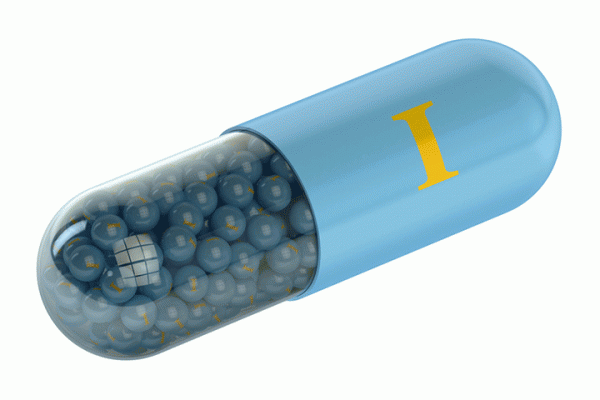
People often think of body parts in isolation rather than as part of a complex, integrated whole. Especially when it comes to discussions of disease in certain parts of the body, and breast cancer in particular, the tendency can be to think of the breasts in isolation. But the breasts and the cancer that develops there for an average of about 12 percent of women are deeply connected to all other parts of the body, especially the ovaries.
First some basic biology from the National Library of Medicine: The ovaries are “a pair of female reproductive glands in which the ova, or eggs, are formed. The ovaries are located in the pelvis, one on each side of the uterus.” In addition to housing the egg cells that are released monthly during a woman’s reproductive years, the ovaries also manufacture estrogen, a hormone that regulates the menstrual cycle and is integral to the development of a baby after fertilization.
Estrogen that’s produced in the ovaries travels via the bloodstream throughout the rest of the body to perform other functions – aiding bone strength and maintaining cardiovascular health. Estrogen is also responsible for the development of secondary sex characteristics – the breasts and pubic hair – in girls as they go through puberty. And it’s during puberty where the connection between the ovaries and the breasts really gets established.
Dr. Ginger Gardner, a gynecologic oncologist at Memorial Sloan Kettering Cancer Centerin New York, says “there are several ways in which breast health and gynecologic health intersect.” First, there’s the hormonal connection. Over a woman’s lifetime, her breasts will see a relatively regular rise and fall in the amount of estrogen that affects the breasts. As her hormone levels fluctuate during her menstrual cycle, she may have higher or lower levels of estrogen in the breasts.
“Most of these female hormones are produced by the ovaries in pre-menopausal women, but what I find a lot of women are surprised by is estrogen is also produced in sources other than the ovary,” Gardner says. After menopause, the ovaries stop producing estrogen, but contrary to popular conception, your body still makes the hormone. Dr. Nicole Williams, assistant professor of medical oncology at the Ohio State University Wexner Medical Center, says the amounts of estrogen your body makes before and after menopause are “about the same. The main difference is before you go through menopause, you have cyclic levels of estrogen and during certain times of the month the levels are higher. After menopause, the body is continuously making estrogen, but overall it’s about the same amount. It’s mainly made in adipose or fat tissue in the body, so that is why women who are a little bit overweight can have a little bit higher risk of developing breast cancer,” she says. And the double-whammy with weight is that after menopause, it gets much harder for most women to lose weight. That’s why it’s important to maintain your weight all along.
Estrogen and Cancer
The body’s natural, ongoing production of estrogen may become a problem if certain cell mutations in the breast develop into hormonally-driven breast cancers, which according to The National Cancer Institute account for approximately 80 percent of all breast cancers.
“Many breast cancers are hormonally driven and the tumor cells in many breast cancers express both estrogen and progesterone receptors,” Gardner says. Receptors are places on the cell that bind with either estrogen and progesterone, and the cancerous cells can use estrogen to grow.
To help stop estrogen from feeding breast cancer tumors, many patients with hormone-positive tumors will be prescribed antiestrogen therapies such as tamoxifen, a drug that was first used in the 1950s to treat breast cancer and is “still known to be a very powerful agent in the management of hormonally driven cancer,” Gardner says.
In addition to antiestrogen drugs, Gardner says aromatase inhibitors, a class of drugs that shut down the production of estrogen in the ovaries may also be used. Gardner says tamoxifen is usually prescribed to pre-menopausal women while aromatase inhibitors are more commonly prescribed for post-menopausal women
And in some patients, surgically removing the ovaries may be part of the recommended course of treatment. This approach may be more common in women who have a BRCA gene mutation and are at a higher risk of developing both breast and ovarian cancers because of it.
This genetic component is another way in which the breasts and ovaries are connected. “The risk factors for developing cancer in the breast and ovaries are similar,” Gardner says, although breast cancer is a lot more common. “Breast cancer occurs in 1 in 7 women whereas ovarian cancer affects 1 in 70.” Nevertheless, she says “certain demographic factors go along with it that are shared, and on top of that, there’s the whole potential for genetic susceptibility.”
Williams says the most common genetic mutations that can lead to cancer of the breasts and ovaries are the BRCA1 and BRCA2 gene mutations. “They are linked to increased breast cancer and ovarian cancer and account for 5 to 10 percent of all breast cancers.” The Susan G. Komen organization reports that BRCA1 and BRCA2 gene mutation carriers have a 45 to 65 percent chance of developing breast cancer by age 70. Similarly, the American Cancer Society reports that being a BRCA1 or BRCA2 carrier correlates to a 10 to 70 percent risk of developing ovarian cancer by age 70.
This is why when a woman has ovarian cancer, Gardner recommends genetic testing and counseling. “For ovarian cancer patients, we categorically recommend genetic screening. We can pick up the BRCA gene mutation and prevent the breast cancer” through regular screening or a prophylactic double mastectomy, she says.
If you have breast cancer and know there’s a family history of breast or ovarian cancer, genetic testing can determine whether you have a BRCA1 or BRCA2 gene mutation. Given that there’s not a great way to screen for ovarian cancer currently, having this information may help you avoid ovarian cancer in the future. “There are really sensitive screening opportunities for breast cancer including mammogram, MRI and breast exams that target an area that is superficial to the body and readily accessible for testing and inspection,” Gardner says. “But the ovary is completely different. It’s small, deep in the pelvis, and a much more difficult area to access for examination. Screening is vague and not specific. There is no mammogram for the ovary and no PSA test like for prostate cancer,” she says. In many women, the first indication of cancer of the ovaries is usually heavy bleeding, which means it may be diagnosed later than other cancers that have better screening tests.
The Foundation for Women’s Cancer offers more information about genetic testing and counseling. Having this information can help you make better decisions about your health, so talk with your doctor about your ovarian cancer risk.











